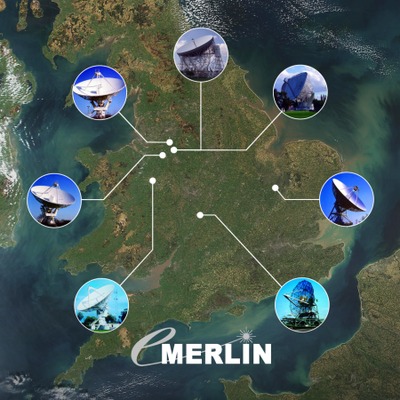UK launches SETI network
A network has been launched to promote academic research in the UK relating to the Search for ExtraTerrestrial Intelligence (SETI). The UK SETI Research Network (UKSRN) brings together academics from 11 institutions across the country.
UKSRN covers a broad spectrum of research topics, including potential methods for detecting signals, the linguistic challenge of deciphering messages, the probability of an extraterrestrial civilisation interacting with Earth and the longevity of civilisations.
Dr Alan Penny, the coordinator of UKSRN, said, “We hope that the existence of the network will excite interest from people in the UK astronomical community that have been thinking about SETI and encourage them to contribute their work.”
The UK recently commissioned the e-MERLIN array of seven radio telescopes for SETI projects.

“The first proposal to search for radio signals from extraterrestrial civilisations was actually inspired by the construction of the Lovell Telescope at Jodrell Bank,” said Dr Tim O’Brien from The University of Manchester’s Jodrell Bank Observatory. “We went on to take part in the SETI Institute’s Project Phoenix from 1998 to 2003, searching for signals from about a thousand nearby stars. At that time the equipment required to sift through the data was expensive and unusual, but our modern telescopes are potentially capable of conducting these type of observations as a matter of course.”
The e-MERLIN array, which includes the Lovell Telescope, is connected by optical fibres and is spread over 217 kilometres from Jodrell Bank to Cambridge. This multi-telescope approach offers potential for distinguishing true extraterrestrial signals from interference generated here on Earth, a key problem for all radio SETI projects.
O’Brien is excited about future prospects, “It’s early days for this new SETI work at Jodrell but we think that using e-MERLIN, and future facilities such as the Square Kilometre Array, we could make an important contribution to the search for intelligent life elsewhere in the Universe.”
$6.1m in govt funding to improve NSW rural connectivity
The funding will improve connectivity to around 1500 premises across the central west and...
Govt funds comms for Navy, Wi-Fi for evacuation centres
The government is upgrading communication systems on Royal Australian Navy ships, and also...
Call to standardise physical security of comms infrastructure
A new white paper from TCCA seeks to catalyse the creation of a global standard for the physical...





